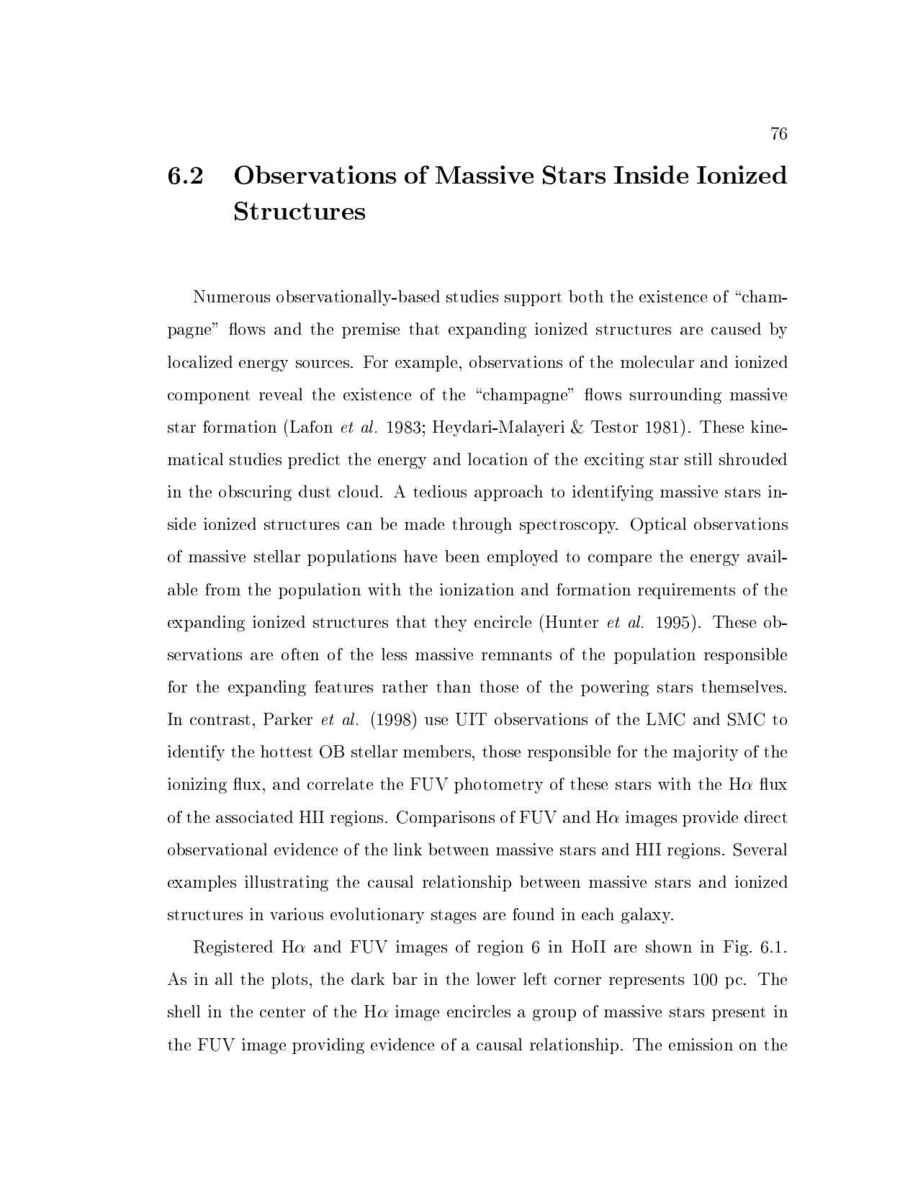
76
6.2 Observations of Massive Stars Inside Ionized
Structures
Numerous observationally-based studies support both the existence of cham-
pagne" ows and the premise that expanding ionized structures are caused by
localized energy sources. For example, observations of the molecular and ionized
component reveal the existence of the champagne" ows surrounding massive
star formation Lafon
et
al.
1983; Heydari-Malayeri & Testor 1981. These kine-
matical studies predict the energy and location of the exciting star still shrouded
in the obscuring dust cloud. A tedious approach to identifying massive stars in-
side ionized structures can be made through spectroscopy. Optical observations
of massive stellar populations have been employed to compare the energy avail-
able from the population with the ionization and formation requirements of the
expanding ionized structures that they encircle Hunter
et
al.
1995. These ob-
servations are often of the less massive remnants of the population responsible
for the expanding features rather than those of the powering stars themselves.
In contrast, Parker
et
al.
1998 use UIT observations of the LMC and SMC to
identify the hottest OB stellar members, those responsible for the majority of the
ionizing ux, and correlate the FUV photometry of these stars with the H ux
of the associated HII regions. Comparisons of FUV and H images provide direct
observational evidence of the link between massive stars and HII regions. Several
examples illustrating the causal relationship between massive stars and ionized
structures in various evolutionary stages are found in each galaxy.
Registered H and FUV images of region 6 in HoII are shown in Fig. 6.1.
As in all the plots, the dark bar in the lower left corner represents 100 pc. The
shell in the center of the H image encircles a group of massive stars present in
the FUV image providing evidence of a causal relationship. The emission on the
